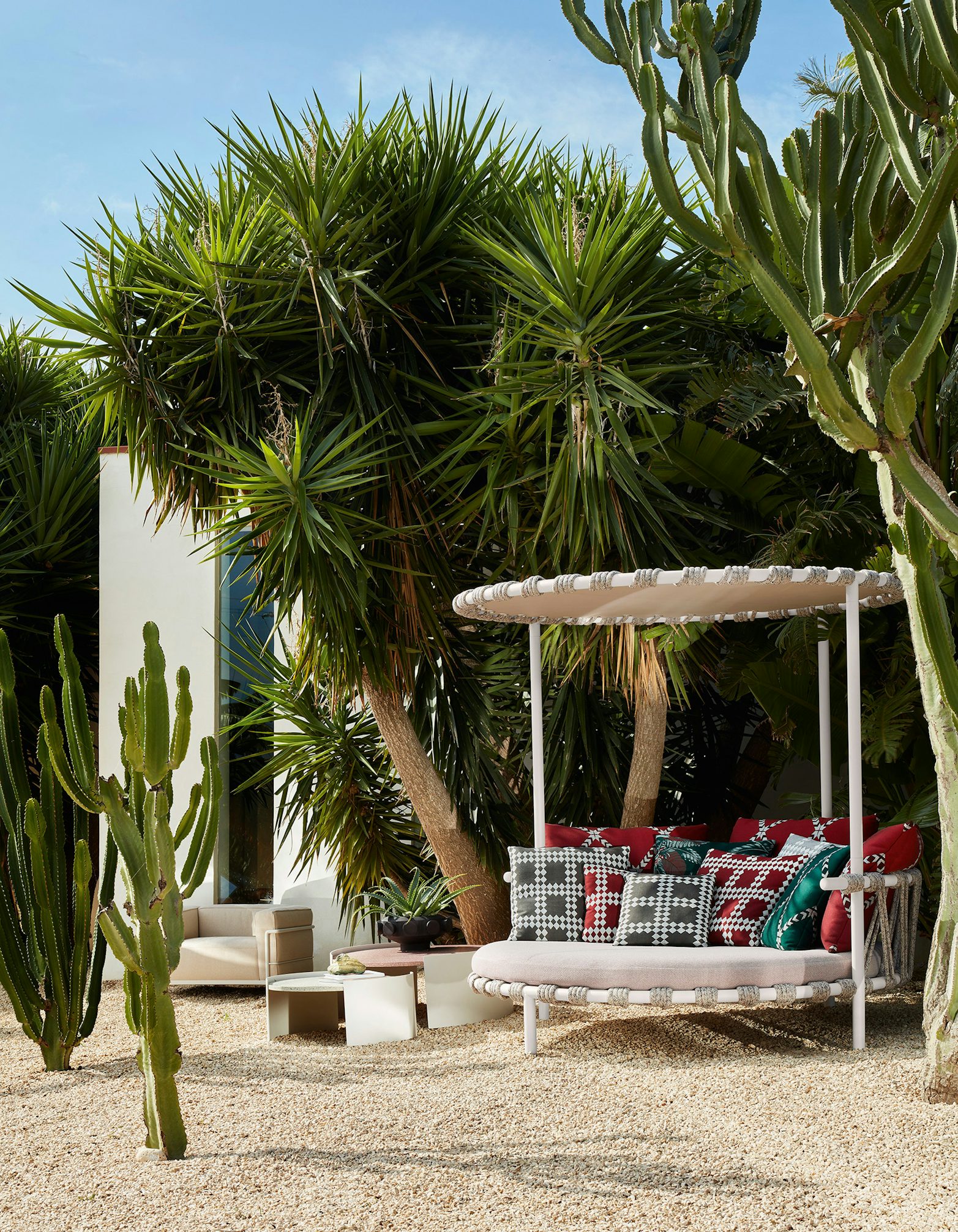Product Gallery
Video
Arne Jacobsen
Denmark (1902–1971)
While architecture was Arne Jacobsen‘s primary focus, he also worked with lighting, textiles, furniture and industrial design, approaching all projects with the same uncompromising perfectionism that defined his entire prolific career. Striving for an ideal balance of organic simplicity and functionalism, he considered every element down to the smallest details and constantly drew inspiration from nature, whose organic shapes informed several of his furniture pieces. Jacobsen’s great love of flowers and landscape gardening also manifested itself in a number of watercolors, wallpapers, and fabrics.
Jacobsen initially trained as a mason and, after graduating from a technical college in Copenhagen in 1924, began his studies at the Royal Danish Academy of Fine Arts. Here, lecturers and leading designers such as Kaare Klint and Kay Fisker, known for their rigorous design approach, came to deeply influence Jacobsen’s work. Jacobsen graduated with an architecture degree in 1927, having already begun to establish himself as a talented architect. In the mid-1920s, he made his mark with designs and ideas that later contributed to the end of romantic neoclassicism – a period of which Jacobsen truly made a name for himself when, together with his friend and fellow student Flemming Lassen, he won a competition to design the House of the Future in Copenhagen in 1929. He went on to design a number of villas before creating the functionalist Bellavista housing estate, which was built in 1932-1934 and strongly inspired by the French-Swiss architect Le Corbusier. From then on, Jacobsen’s career gathered momentum with large buildings and, later, with furniture and interior design.
An extremely productive architect and designer, Jacobsen nevertheless made time to teach. For nearly a decade, from 1956 to 1965, he was a professor at the Royal Academy of Fine Arts in Copenhagen and was subsequently awarded honorary doctorates from both the University of Oxford and the University of Strathclyde in Glasgow. Jacobsen was also a member of a number of European academy councils. The now world-famous architect received multiple Danish and international awards, including the RIBA Bronze Medal in 1963 and the Medaille d’Or from the Académie d’Architecture de France in 1971.
More in Furniture
View All
by Piet Boon
for Piet Boon Studio
Saar Stool

by Patricia Urquiola
for Cassina
Trampoline Daybed

by Ronan & Erwan Bouroullec
for Magis
Officina Low Table
More in Arne Jacobsen
View All
by Arne Jacobsen
for &Tradition
Mayor AJ5 Sofa

by Arne Jacobsen
for Carl Hansen & Søn
AJ52 Society Desk

by Arne Jacobsen
for &Tradition









